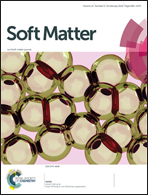Using DNA strand displacement to control interactions in DNA-grafted colloids
Abstract
Grafting DNA oligonucleotides to colloidal particles leads to specific, reversible interactions between those particles. However, the interaction strength varies steeply and monotonically with temperature, hindering the use of DNA-mediated interactions in self-assembly. We show how the dependence on temperature can be modified in a controlled way by incorporating DNA strand-displacement reactions. The method allows us to make multicomponent systems that can self-assemble over a wide range of temperatures, invert the dependence on temperature to design colloidal systems that melt upon cooling, controllably transition between structures with different compositions, or design systems with multiple melting transitions. This wide range of behaviors can be realized simply by adding a small number of DNA strands to the solution, making the approach modular and straightforward to implement. We conclude with practical considerations for designing systems of DNA-mediated colloidal interactions.



 Please wait while we load your content...
Please wait while we load your content...